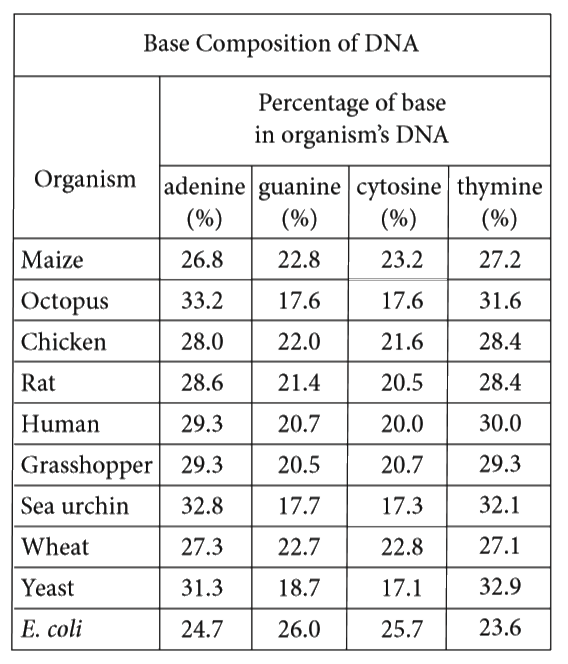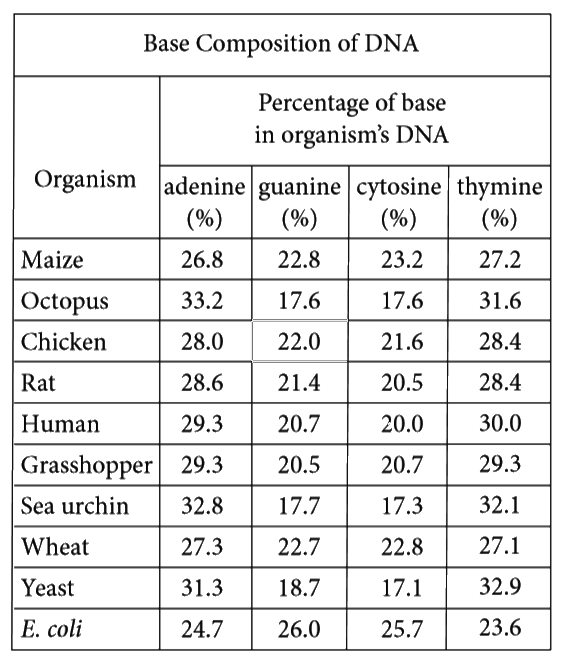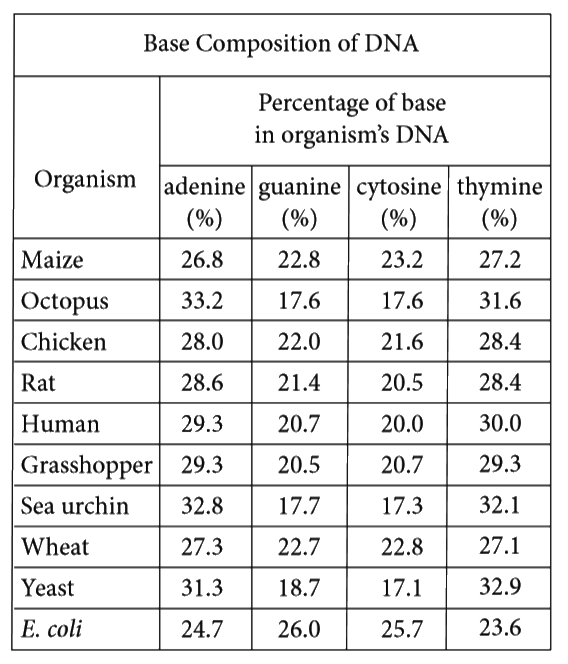Assertion : When the DNA sequences of two people are cut using the same restriction enzyme, the length and number of fragments obtained are different for both.
Reason : DNA sequence is arranged tandemly in many copy numbers which varies from chromosome to chromosome in an individual, showing high degree of polymorphism.
If both assertion and reason are true and reason is the correct explanation of assertion
If both assertion and reason are true but reason is not the correct explanation of assertion
If assertion is true but reason is false
if both assertion and reason are false.
The correct Answer is:a
To solve the question regarding the assertion and reason provided, we will analyze both statements step by step.
1. Understanding the Assertion:
- The assertion states that when the DNA sequences of two individuals are cut using the same restriction enzyme, the resulting lengths and number of fragments will differ between the two individuals.
- This is true because each person's DNA sequence is unique due to genetic variation. Different sequences will have different restriction sites, leading to variations in the fragments produced.
2. Understanding the Reason:
- The reason given is that DNA sequences are arranged in tandemly repeated units, which can vary from chromosome to chromosome in an individual, resulting in a high degree of polymorphism.
- This statement is also true. Tandem repeats, such as microsatellites and minisatellites, contribute to genetic diversity among individuals. The variations in these sequences can lead to differences in how DNA is cut by restriction enzymes.
3. Connecting Assertion and Reason:
- The assertion and reason are both correct. The reason explains why the assertion is true: the polymorphism in DNA sequences leads to differences in the number and length of fragments produced when cut by the same restriction enzyme.
4. Conclusion:
- Since both the assertion and reason are true, and the reason provides a correct explanation for the assertion, the answer is option A: both assertion and reason are true, and the reason is the correct explanation for the assertion.
Final Answer:
Option A: Both assertion and reason are true, and the reason is the correct explanation for the assertion.
- The assertion states that when the DNA sequences of two individuals are cut using the same restriction enzyme, the resulting lengths and number of fragments will differ between the two individuals.
- This is true because each person's DNA sequence is unique due to genetic variation. Different sequences will have different restriction sites, leading to variations in the fragments produced.
- The reason given is that DNA sequences are arranged in tandemly repeated units, which can vary from chromosome to chromosome in an individual, resulting in a high degree of polymorphism.
- This statement is also true. Tandem repeats, such as microsatellites and minisatellites, contribute to genetic diversity among individuals. The variations in these sequences can lead to differences in how DNA is cut by restriction enzymes.
- The assertion and reason are both correct. The reason explains why the assertion is true: the polymorphism in DNA sequences leads to differences in the number and length of fragments produced when cut by the same restriction enzyme.
- Since both the assertion and reason are true, and the reason provides a correct explanation for the assertion, the answer is option A: both assertion and reason are true, and the reason is the correct explanation for the assertion.
Option A: Both assertion and reason are true, and the reason is the correct explanation for the assertion.
Topper's Solved these Questions
- MOLECULAR BASIS OF INHERITANCEBook:NCERT FINGERTPS ENGLISHChapter:MOLECULAR BASIS OF INHERITANCEExercise:Molecular Basis Of Inheritance
Explore 151 Videos
- MOLECULAR BASIS OF INHERITANCEBook:NCERT FINGERTPS ENGLISHChapter:MOLECULAR BASIS OF INHERITANCEExercise:NCERT
Explore 28 Videos
- MICROBES IN HUMAN WELFAREBook:NCERT FINGERTPS ENGLISHChapter:MICROBES IN HUMAN WELFAREExercise:Microbes In Human Welfare
Explore 138 Videos
- ORGANISMS AND POPULATIONBook:NCERT FINGERTPS ENGLISHChapter:ORGANISMS AND POPULATIONExercise:Organisms And Population
Explore 175 Videos
Similar Questions
When the genomes of two people are cut using the same restriction enzyme, the length and number of fragments obtained are different, this is called
View SolutionAssertion: The recombinant DNA molecule cannot be created, unless one cuts the vector & source DNA with same restriction enzyme
Reason :When cuts by same enzyme both will have same sticky ends, that can be joined by DNA ligase
View Solution
Knowledge Check
Which of the following statements does not hold true for restriction enzyme?
(a) It recongnises a palindromic nucleotide sequence
(b) It is an endonuclease.
(c) It is isolated from viruses
(d) It produces the same kind of sticky ends in different DNA moleculesAIt recongnises a palindromic nucleotide sequenceBIt is an endonuclease.CIt is isolated from virusesDIt produces the same kind of sticky ends in different DNA moleculesThe chemical formula of deoxyribonucleic acid
(DNA) is now well established. The molecule is a
very long chain, the backbone of which consists of a
regular alternation of sugar and phosphate groups.
5 To each sugar is attached a nitrogenous base, which
can be of four different types. Two of the possible
bases—adenine and guanine—are purines, and the
other two—thymine and cytosine—are pyrimidines.
So far as is known, the sequence of bases along the
10 chain is irregular. The monomer unit, consisting of
phosphate, sugar and base, is known as a nucleotide.
The first feature of our structure which is of
biological interest is that it consists not of one chain,
but of two. These two chains are both coiled around
15 a common fiber axis. It has often been assumed that
since there was only one chain in the chemical
formula there would only be one in the structural
unit. However, the density, taken with the X-ray
evidence, suggests very strongly that there are two.
20. The other biologically important feature is the
manner in which the two chains are held together.
This is done by hydrogen bonds between the bases.
The bases are joined together in pairs, a single base
from one chain being hydrogen-bonded to a single
25 base from the other. The important point is that only
certain pairs of bases will fit into the structure.
One member of a pair must be a purine and the other
a pyrimidine in order to bridge between the two
chains. If a pair consisted of two purines, for
30 example, there would not be room for it.
We believe that the bases will be present almost
entirely in their most probable forms. If this is true,
the conditions for forming hydrogen bonds are more
restrictive, and the only pairs of bases possible are:
35 adenine with thymine, and guanine with cytosine.
Adenine, for example, can occur on either chain, but
when it does, its partner on the other chain must
always be thymine.
The phosphate-sugar backbone of our model is
40 completely regular, but any sequence of the pairs of
bases can fit into the structure. It follows that in a
long molecule many different permutations are
possible, and it therefore seems likely that the precise
sequence of bases is the code which carries the
45 genetical information. If the actual order of the bases
on one of the pair of chains were given, one could
write down the exact order of the bases on the other
one, because of the specific pairing. Thus one chain
is, as it were, the complement of the other, and it is
50 this feature which suggests how the deoxyribonucleic
acid molecule might duplicate itself.
The table shows, for various organisms, the percentage of
each of the four types of nitrogenous bases in that
organism’s DNA.

Adapted from Manju Bansal, “DNA Structure: Revisiting the
Watson-Crick Double Helix.” ©2003 by Current Science Association,
Bangalore
25. The authors’ main purpose of including the information about X-ray evidence and density is toAestablish that DNA is the molecule that carries the genetic information.Bpresent an alternate hypothesis about the composition of a nucleotide.Cprovide support for the authors’ claim about the number of chains in a molecule of DNA.Dconfirm the relationship between the density of DNA and the known chemical formula of DNA.The chemical formula of deoxyribonucleic acid
(DNA) is now well established. The molecule is a
very long chain, the backbone of which consists of a
regular alternation of sugar and phosphate groups.
5 To each sugar is attached a nitrogenous base, which
can be of four different types. Two of the possible
bases—adenine and guanine—are purines, and the
other two—thymine and cytosine—are pyrimidines.
So far as is known, the sequence of bases along the
10 chain is irregular. The monomer unit, consisting of
phosphate, sugar and base, is known as a nucleotide.
The first feature of our structure which is of
biological interest is that it consists not of one chain,
but of two. These two chains are both coiled around
15 a common fiber axis. It has often been assumed that
since there was only one chain in the chemical
formula there would only be one in the structural
unit. However, the density, taken with the X-ray
evidence, suggests very strongly that there are two.
20. The other biologically important feature is the
manner in which the two chains are held together.
This is done by hydrogen bonds between the bases.
The bases are joined together in pairs, a single base
from one chain being hydrogen-bonded to a single
25 base from the other. The important point is that only
certain pairs of bases will fit into the structure.
One member of a pair must be a purine and the other
a pyrimidine in order to bridge between the two
chains. If a pair consisted of two purines, for
30 example, there would not be room for it.
We believe that the bases will be present almost
entirely in their most probable forms. If this is true,
the conditions for forming hydrogen bonds are more
restrictive, and the only pairs of bases possible are:
35 adenine with thymine, and guanine with cytosine.
Adenine, for example, can occur on either chain, but
when it does, its partner on the other chain must
always be thymine.
The phosphate-sugar backbone of our model is
40 completely regular, but any sequence of the pairs of
bases can fit into the structure. It follows that in a
long molecule many different permutations are
possible, and it therefore seems likely that the precise
sequence of bases is the code which carries the
45 genetical information. If the actual order of the bases
on one of the pair of chains were given, one could
write down the exact order of the bases on the other
one, because of the specific pairing. Thus one chain
is, as it were, the complement of the other, and it is
50 this feature which suggests how the deoxyribonucleic
acid molecule might duplicate itself.
The table shows, for various organisms, the percentage of
each of the four types of nitrogenous bases in that
organism’s DNA.

Adapted from Manju Bansal, “DNA Structure: Revisiting the
Watson-Crick Double Helix.” ©2003 by Current Science Association,
Bangalore
24. In the second paragraph (lines 12-19), what do the authors claim to be a feature of biological interest?AThe chemical formula of DNABThe common fiber axisCThe X-ray evidenceDDNA consisting of two chains
Restriction enzymes are used in genetic engineering because they
(a) Can join DNA fragments
(b) Cut DNA at specific base sequence
(c) Cut DNA at variable sites
(d) Are proteolytic enzymes which degrade harmful proteins
View SolutionA plasmid DNA and linear DNA (both are of the same size) have one site for restriction endonuclease. When cut and separated on agarose gel electrophoresis, plasmid shows one DNA band, while linear DNA shows two fragments Explain.
View SolutionA plasmid DNA and a linear DNA (both are of the same size) have one site for a restriction endonuclease. When cut and separated on agarose gel electrophoresis, plasmid shows one DNA band while linear DNA shows two fragments. Explain
View SolutionMatch each term column-I with the definition in column-II,
Column - I
A) Bacterial enzymes used to cut DNA at defined sequences
B) Sequences cut by restriction enzymes
C) Ends left on DNA segments cut by DNA restriction enzymes
D) Circular pieces of DNA found in bacteria
E) Bacterial viruses
F) Process by which bacteria take up pieces of DNA from the environment
G) Plasmid DNA that has incorporated human DNA
H) Term used to describe any vehicle that moves DNA from the organism to another
Column - II
I) Transformation
II) Cloning vector
III) Recombinant
IV) Recognition sequences
V) Plasmids
VI) Sticky ends
VII) Restriction enzymes
VIII) Bacteriophages
View SolutionThe chemical formula of deoxyribonucleic acid
(DNA) is now well established. The molecule is a
very long chain, the backbone of which consists of a
regular alternation of sugar and phosphate groups.
5 To each sugar is attached a nitrogenous base, which
can be of four different types. Two of the possible
bases—adenine and guanine—are purines, and the
other two—thymine and cytosine—are pyrimidines.
So far as is known, the sequence of bases along the
10 chain is irregular. The monomer unit, consisting of
phosphate, sugar and base, is known as a nucleotide.
The first feature of our structure which is of
biological interest is that it consists not of one chain,
but of two. These two chains are both coiled around
15 a common fiber axis. It has often been assumed that
since there was only one chain in the chemical
formula there would only be one in the structural
unit. However, the density, taken with the X-ray
evidence, suggests very strongly that there are two.
20. The other biologically important feature is the
manner in which the two chains are held together.
This is done by hydrogen bonds between the bases.
The bases are joined together in pairs, a single base
from one chain being hydrogen-bonded to a single
25 base from the other. The important point is that only
certain pairs of bases will fit into the structure.
One member of a pair must be a purine and the other
a pyrimidine in order to bridge between the two
chains. If a pair consisted of two purines, for
30 example, there would not be room for it.
We believe that the bases will be present almost
entirely in their most probable forms. If this is true,
the conditions for forming hydrogen bonds are more
restrictive, and the only pairs of bases possible are:
35 adenine with thymine, and guanine with cytosine.
Adenine, for example, can occur on either chain, but
when it does, its partner on the other chain must
always be thymine.
The phosphate-sugar backbone of our model is
40 completely regular, but any sequence of the pairs of
bases can fit into the structure. It follows that in a
long molecule many different permutations are
possible, and it therefore seems likely that the precise
sequence of bases is the code which carries the
45 genetical information. If the actual order of the bases
on one of the pair of chains were given, one could
write down the exact order of the bases on the other
one, because of the specific pairing. Thus one chain
is, as it were, the complement of the other, and it is
50 this feature which suggests how the deoxyribonucleic
acid molecule might duplicate itself.
The table shows, for various organisms, the percentage of
each of the four types of nitrogenous bases in that
organism’s DNA.

Adapted from Manju Bansal, “DNA Structure: Revisiting the
Watson-Crick Double Helix.” ©2003 by Current Science Association,
Bangalore
30. According to the table, which of the following pairs of base percentages in sea urchin DNA provides evidence in support of the answer to the previous question?
View Solution

